- Home
- J. R. R. Tolkien
Tree and Leaf Page 3
Tree and Leaf Read online
Page 3
At one time it was a dominant view that all such matter was derived from ‘nature-myths’. The Olympians were personifications of the sun, of dawn, of night, and so on, and all the stories told about them were originally myths (allegories would have been a better word) of the greater elemental changes and processes of nature. Epic, heroic legend, saga, then localised these stories in real places and humanised them by attributing them to ancestral heroes, mightier than men and yet already men. And finally these legends, dwindling down, became folk-tales, Märchen, fairy-stories – nursery-tales.
That would seem to be the truth almost upside down. The nearer the so-called ‘nature-myth’, or allegory of the large processes of nature, is to its supposed archetype, the less interesting it is, and indeed the less is it of a myth capable of throwing any illumination whatever on the world. Let us assume for the moment, as this theory assumes, that nothing actually exists corresponding to the ‘gods’ of mythology: no personalities, only astronomical or meteorological objects. Then these natural objects can only be arrayed with a personal significance and glory by a gift, the gift of a person, of a man. Personality can only be derived from a person. The gods may derive their colour and beauty from the high splendours of nature, but it was Man who obtained these for them, abstracted them from sun and moon and cloud; their personality they get direct from him; the shadow or flicker of divinity that is upon them they receive through him from the invisible world, the Supernatural. There is no fundamental distinction between the higher and lower mythologies. Their peoples live, if they live at all, by the same life, just as in the mortal world do kings and peasants.
Let us take what looks like a clear case of Olympian nature-myth: the Norse god Thórr. His name is Thunder, of which Thórr is the Norse form; and it is not difficult to interpret his hammer, Miöllnir, as lightning. Yet Thórr has (as far as our late records go) a very marked character, or personality, which cannot be found in thunder or in lightning, even though some details can, as it were, be related to these natural phenomena: for instance, his red beard, his loud voice and violent temper, his blundering and smashing strength. None the less it is asking a question without much meaning, if we inquire: Which came first, nature-allegories about personalized thunder in the mountains, splitting rocks and trees; or stories about an irascible, not very clever, red-beard farmer, of a strength beyond common measure, a person (in all but mere stature) very like the Northern farmers, the bœndr by whom Thórr was chiefly beloved? To a picture of such a man Thórr may be held to have ‘dwindled’, or from it the god may be held to have been enlarged. But I doubt whether either view is right – not by itself, not if you insist that one of these things must precede the other. It is more reasonable to suppose that the farmer popped up in the very moment when Thunder got a voice and face; that there was a distant growl of thunder in the hills every time a story-teller heard a farmer in a rage.
Thórr must, of course, be reckoned a member of the higher aristocracy of mythology: one of the rulers of the world. Yet the tale that is told of him in Thrymskvitha (in the Elder Edda) is certainly just a fairy-story. It is old, as far as Norse poems go, but that is not far back (say AD 900 or a little earlier, in this case). But there is no real reason for supposing that this tale is ‘unprimitive’, at any rate in quality: that is, because it is of folk-tale kind and not very dignified. If we could go backwards in time, the fairy-story might be found to change in details, or to give way to other tales. But there would always be a ‘fairy-tale’ as long as there was any Thórr. When the fairy-tale ceased, there would be just thunder, which no human ear had yet heard.
Something really ‘higher’ is occasionally glimpsed in mythology: Divinity, the right to power (as distinct from its possession), the due of worship; in fact ‘religion’. Andrew Lang said, and is by some still commended for saying,19 that mythology and religion (in the strict sense of that word) are two distinct things that have become inextricably entangled, though mythology is in itself almost devoid of religious significance.20
Yet these things have in fact become entangled – or maybe they were sundered long ago and have since groped slowly, through a labyrinth of error, through confusion, back towards re-fusion. Even fairy-stories as a whole have three faces: the Mystical towards the Supernatural; the Magical towards Nature; and the Mirror of scorn and pity towards Man. The essential face of Faërie is the middle one, the Magical. But the degree in which the others appear (if at all) is variable, and may be decided by the individual story-teller. The Magical, the fairy-story, may be used as a Mirour de l’Omme; and it may (but not so easily) be made a vehicle of Mystery. This at least is what George MacDonald attempted, achieving stories of power and beauty when he succeeded, as in The Golden Key (which he called a fairy-tale); and even when he partly failed, as in Lilith (which he called a romance).
For a moment let us return to the ‘Soup’ that I mentioned above. Speaking of the history of stories and especially of fairy-stories we may say that the Pot of Soup, the Cauldron of Story, has always been boiling, and to it have continually been added new bits, dainty and undainty. For this reason, to take a casual example, the fact that a story resembling the one known as The Goosegirl (Die Gänsemagd in Grimm) is told in the thirteenth century of Bertha Broadfoot, mother of Charlemagne, really proves nothing either way: neither that the story was (in the thirteenth century) descending from Olympus or Asgard by way of an already legendary king of old, on its way to become a Hausmärchen; nor that it was on its way up. The story is found to be widespread, unattached to the mother of Charlemagne or to any historical character. From this fact by itself we certainly cannot deduce that it is not true of Charlemagne’s mother, though that is the kind of deduction that is most frequently made from that kind of evidence. The opinion that the story is not true of Bertha Broadfoot must be founded on something else: on features in the story which the critic’s philosophy does not allow to be possible in ‘real life’, so that he would actually disbelieve the tale, even if it were found nowhere else; or on the existence of good historical evidence that Bertha’s actual life was quite different, so that he would disbelieve the tale, even if his philosophy allowed that it was perfectly possible in ‘real life’. No one, I fancy, would discredit a story that the Archbishop of Canterbury slipped on a banana skin merely because he found that a similar comic mishap had been reported of many people, and especially of elderly gentlemen of dignity. He might disbelieve the story, if he discovered that in it an angel (or even a fairy) had warned the Archbishop that he would slip if he wore gaiters on a Friday. He might also disbelieve the story, if it was stated to have occurred in the period between, say, 1940 and 1945. So much for that. It is an obvious point, and it has been made before; but I venture to make it again (although it is a little beside my present purpose), for it is constantly neglected by those who concern themselves with the origins of tales.
But what of the banana skin? Our business with it really only begins when it has been rejected by historians. It is more useful when it has been thrown away. The historian would be likely to say that the banana-skin story ‘became attached to the Archbishop’, as he does say on fair evidence that ‘the Goosegirl Märchen became attached to Bertha’. That way of putting it is harmless enough, in what is commonly known as ‘history’. But is it really a good description of what is going on and has gone on in the history of story-making? I do not think so. I think it would be nearer the truth to say that the Archbishop bcame attached to the banana skin, or that Bertha was turned into the Goosegirl. Better still: I would say that Charlemagne’s mother and the Archbishop were put into the Pot, in fact got into the Soup. They were just new bits added to the stock. A considerable honour, for in that soup were many things older, more potent, more beautiful, comic, or terrible than they were in themselves (considered simply as figures of history).
It seems fairly plain that Arthur, once historical (but perhaps as such not of great importance), was also put into the Pot. There he was boiled for a long
time, together with many other older figures and devices, of mythology and Faërie, and even some other stray bones of history (such as Alfred’s defence against the Danes), until he emerged as a King of Faërie. The situation is similar in the great Northern ‘Arthurian’ court of the Shield-Kings of Denmark, the Scyldingas of ancient English tradition. King Hrothgar and his family have many manifest marks of true history, far more than Arthur; yet even in the older (English) accounts of them they are associated with many figures and events of fairy-story: they have been in the Pot. But I refer now to the remnants of the oldest recorded English tales of Faërie (or its borders), in spite of the fact that they are little known in England, not to discuss the turning of the bear-boy into the knight Beowulf, or to explain the intrusion of the ogre Grendel into the royal hall of Hrothgar. I wish to point to something else that these traditions contain: a singularly suggestive example of the relation of the ‘fairy-tale element’ to gods and kings and nameless men, illustrating (I believe) the view that this element does not rise or fall, but is there, in the Cauldron of Story, waiting for the great figures of Myth and History, and for the yet nameless He or She, waiting for the moment when they are cast into the simmering stew, one by one or all together, without consideration of rank or precedence.
The great enemy of King Hrothgar was Froda, King of the Heathobards. Yet of Hrothgar’s daughter Freawaru we hear echoes of a strange tale – not a usual one in Northern heroic legend: the son of the enemy of her house, Ingeld son of Froda, fell in love with her and wedded her, disastrously. But that is extremely interesting and significant. In the background of the ancient feud looms the figure of that god whom the Norsemen called Frey (the Lord) or Yngvi-frey, and the Angles called Ing: a god of the ancient Northern mythology (and religion) of Fertility and Corn. The enmity of the royal houses was connected with the sacred site of a cult of that religion. Ingeld and his father bear names belonging to it. Freawaru herself is named ‘Protection of the Lord (of Frey)’. Yet one of the chief things told later (in Old Icelandic) about Frey is the story in which he falls in love from afar with the daughter of the enemies of the gods, Gerdr, daughter of the giant Gymir, and weds her. Does this prove that Ingeld and Freawaru, or their love, are ‘merely mythical’? I think not. History often resembles ‘Myth’, because they are both ultimately of the same stuff. If indeed Ingeld and Freawaru never lived, or at least never loved, then it is ultimately from nameless man and woman that they get their tale, or rather into whose tale they have entered. They have been put into the Cauldron, where so many potent things lie simmering agelong on the fire, among them Love-at-first-sight. So too of the god. If no young man had ever fallen in love by chance meeting with a maiden, and found old enmities to stand between him and his love, then the god Frey would never have seen Gerdr the giant’s daughter from the high-seat of Odin. But if we speak of a Cauldron, we must not wholly forget the Cooks. There are many things in the Cauldron, but the Cooks do not dip in the ladle quite blindly. Their selection is important. The gods are after all gods, and it is a matter of some moment what stories are told of them. So we must freely admit that a tale of love is more likely to be told of a prince in history, indeed is more likely actually to happen in an historical family whose traditions are those of golden Frey and the Vanir, rather than those of Odin the Goth, the Necromancer, glutter of the crows, Lord of the Slain. Small wonder that spell means both a story told, and a formula of power over living men.
But when we have done all that research – collection and comparison of the tales of many lands – can do; when we have explained many of the elements commonly found embedded in fairy-stories (such as stepmothers, enchanted bears and bulls, cannibal witches, taboos on names, and the like) as relics of ancient customs once practised in daily life, or of beliefs once held as beliefs and not as ‘fancies’ – there remains still a point too often forgotten: that is the effect produced now by these old things in the stories as they are.
For one thing they are now old, and antiquity has an appeal in itself. The beauty and horror of The Juniper Tree (Von dem Machandelboom), with its exquisite and tragic beginning, the abominable cannibal stew, the gruesome bones, the gay and vengeful bird-spirit coming out of a mist that rose from the tree, has remained with me since childhood; and yet always the chief flavour of that tale lingering in the memory was not beauty or horror, but distance and a great abyss of time, not measurable even by twe tusend Johr. Without the stew and the bones – which children are now too often spared in mollified versions of Grimm21 – that vision would largely have been lost. I do not think I was harmed by the horror in the fairy-tale setting, out of whatever dark beliefs and practices of the past it may have come. Such stories have now a mythical or total (unanalysable) effect, an effect quite independent of the findings of Comparative Folk-lore, and one which it cannot spoil or explain; they open a door on Other Time, and if we pass through, though only for a moment, we stand outside our own time, outside Time itself, maybe.
If we pause, not merely to note that such old elements have been preserved, but to think how they have been preserved, we must conclude, I think, that it has happened, often if not always, precisely because of this literary effect. It cannot have been we, or even the brothers Grimm, that first felt it. Fairy-stories are by no means rocky matrices out of which the fossils cannot be prised except by an expert geologist. The ancient elements can be knocked out, or forgotten and dropped out, or replaced by other ingredients with the greatest ease: as any comparison of a story with closely related variants will show. The things that are there must often have been retained (or inserted) because the oral narrators, instinctively or consciously, felt their literary ‘significance’22. Even where a prohibition in a fairy-story is guessed to be derived from some taboo once practised long ago, it has probably been preserved in the later stages of the tale’s history because of the great mythical significance of prohibition. A sense of that significance may indeed have lain behind some of the taboos themselves. Thou shalt not – or else thou shalt depart beggared into endless regret. The gentlest ‘nursery-tales’ know it. Even Peter Rabbit was forbidden a garden, lost his blue coat, and took sick. The Locked Door stands as an eternal Temptation.
CHILDREN
I will now turn to children, and so come to the last and most important of the three questions: what, if any, are the values and functions of fairy-stories now? It is usually assumed that children are the natural or the specially appropriate audience for fairy-stories. In describing a fairy-story which they think adults might possibly read for their own entertainment, reviewers frequently indulge in such waggeries as: ‘this book is for children from the ages of six to sixty’. But I have never yet seen the puff of a new motor-model that began thus: ‘this toy will amuse infants from seventeen to seventy’; though that to my mind would be much more appropriate. Is there any essential connection between children and fairy-stories? Is there any call for comment, if an adult reads them for himself? Reads them as tales, that is, not studies them as curios. Adults are allowed to collect and study anything, even old theatre-programmes or paper bags.
Among those who still have enough wisdom not to think fairy-stories pernicious, the common opinion seems to be that there is a natural connection between the minds of children and fairy-stories, of the same order as the connection between children’s bodies and milk. I think this is an error; at best an error of false sentiment, and one that is therefore most often made by those who, for whatever private reason (such as childlessness), tend to think of children as a special kind of creature, almost a different race, rather than as normal, if immature, members of a particular family, and of the human family at large.
Actually, the association of children and fairy-stories is an accident of our domestic history. Fairy-stories have in the modern lettered world been relegated to the ‘nursery’, as shabby or old-fashioned furniture is relegated to the playroom, primarily because the adults do not want it, and do not mind if it is misused.23 It is not the choice
of the children which decides this. Children as a class – except in a common lack of experience they are not one – neither like fairy-stories more, nor understand them better than adults do; and no more than they like many other things. They are young and growing, and normally have keen appetites, so the fairy-stories as a rule go down well enough. But in fact only some children, and some adults, have any special taste for them; and when they have it, it is not exclusive, nor even necessarily dominant.24 It is a taste, too, that would not appear, I think, very early in childhood without artificial stimulus; it is certainly one that does not decrease but increases with age, if it is innate.
It is true that in recent times fairy-stories have usually been written or ‘adapted’ for children. But so may music be, or verse, or novels, or history, or scientific manuals. It is a dangerous process, even when it is necessary. It is indeed only saved from disaster by the fact that the arts and sciences are not as a whole relegated to the nursery; the nursery and schoolroom are merely given such tastes and glimpses of the adult thing as seem fit for them in adult opinion (often much mistaken). Any one of these things would, if left altogether in the nursery, become gravely impaired. So would a beautiful table, a good picture, or a useful machine (such as a microscope), be defaced or broken, if it were left long unregarded in a schoolroom. Fairy-stories banished in this way, cut off from a full adult art, would in the end be ruined; indeed in so far as they have been so banished, they have been ruined.

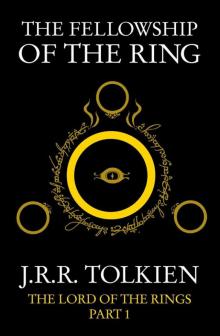 The Fellowship of the Ring
The Fellowship of the Ring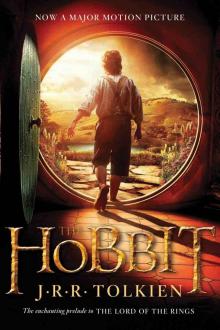 The Hobbit
The Hobbit The Two Towers
The Two Towers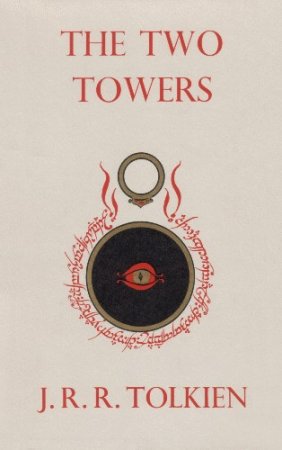 The Return of the King
The Return of the King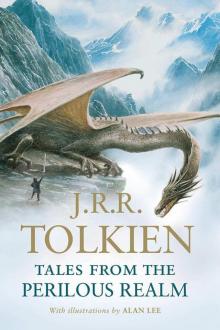 Tales From the Perilous Realm
Tales From the Perilous Realm Leaf by Niggle
Leaf by Niggle The Silmarillon
The Silmarillon The Book of Lost Tales, Part Two
The Book of Lost Tales, Part Two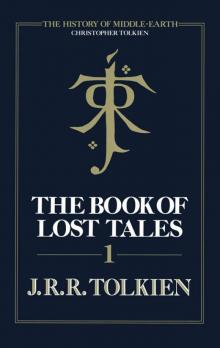 The Book of Lost Tales, Part One
The Book of Lost Tales, Part One The Book of Lost Tales 2
The Book of Lost Tales 2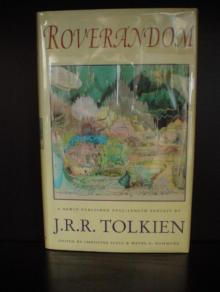 Roverandom
Roverandom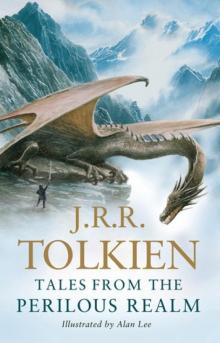 Smith of Wootton Major
Smith of Wootton Major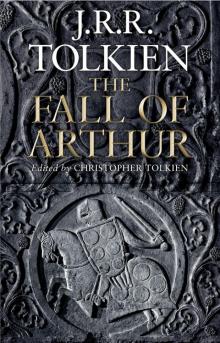 The Fall of Arthur
The Fall of Arthur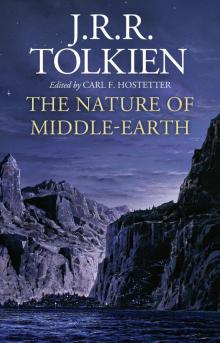 The Nature of Middle-earth
The Nature of Middle-earth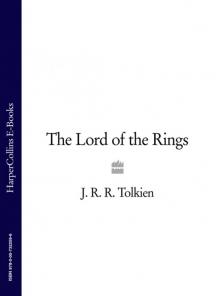 The Lord of the Rings: The Fellowship of the Ring, The Two Towers, The Return of the King
The Lord of the Rings: The Fellowship of the Ring, The Two Towers, The Return of the King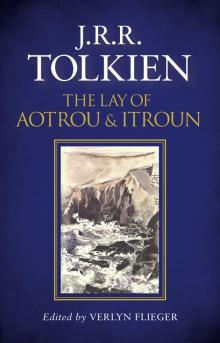 The Lay of Aotrou and Itroun
The Lay of Aotrou and Itroun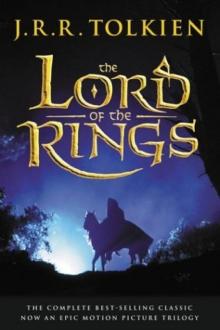 lord_rings.qxd
lord_rings.qxd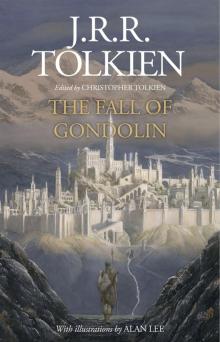 The Fall of Gondolin
The Fall of Gondolin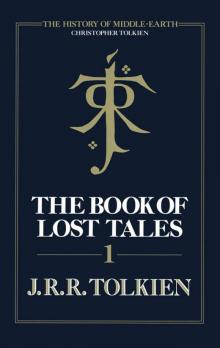 The Book of Lost Tales, Part 1
The Book of Lost Tales, Part 1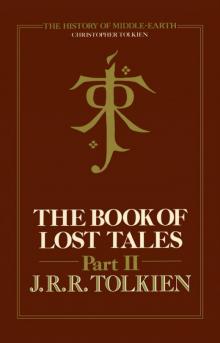 The Book of Lost Tales, Part 2
The Book of Lost Tales, Part 2 The Lord of the Rings
The Lord of the Rings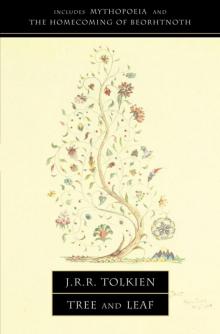 Tree and Leaf
Tree and Leaf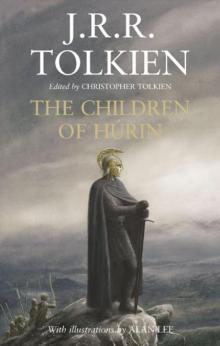 The Children of Húrin
The Children of Húrin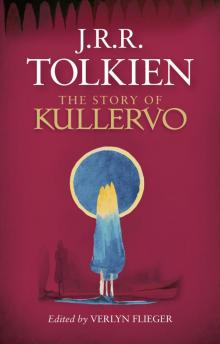 The Story of Kullervo
The Story of Kullervo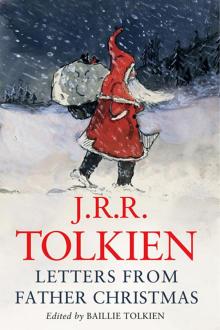 Letters From Father Christmas
Letters From Father Christmas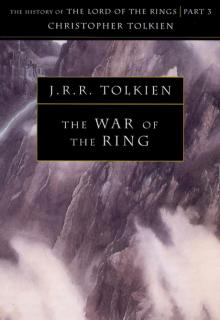 The History of Middle Earth: Volume 8 - The War of the Ring
The History of Middle Earth: Volume 8 - The War of the Ring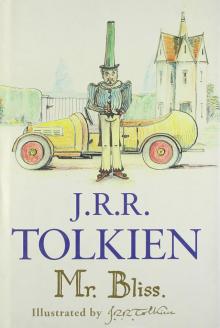 Mr. Bliss
Mr. Bliss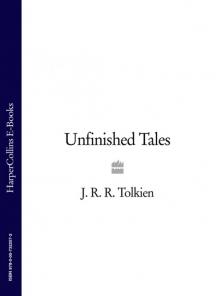 Unfinished Tales
Unfinished Tales The Adventures of Tom Bombadil
The Adventures of Tom Bombadil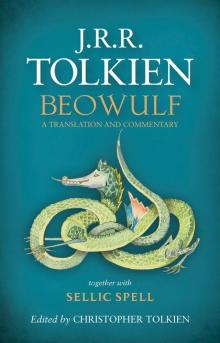 Beowulf: A Translation and Commentary, together with Sellic Spell
Beowulf: A Translation and Commentary, together with Sellic Spell The Silmarillion
The Silmarillion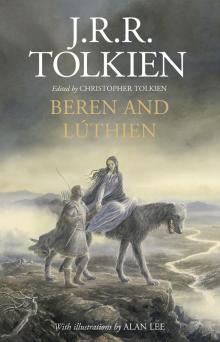 Beren and Lúthien
Beren and Lúthien